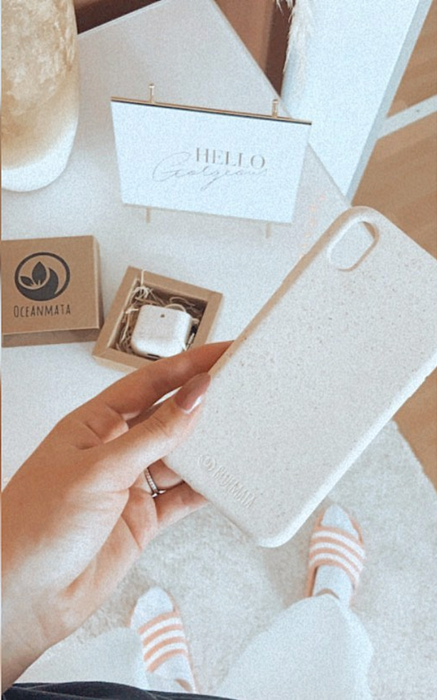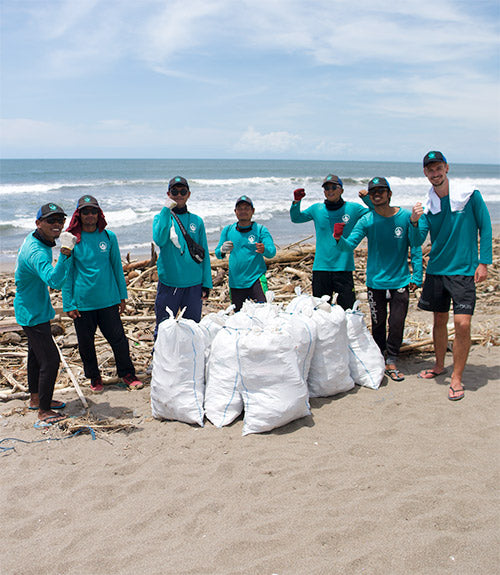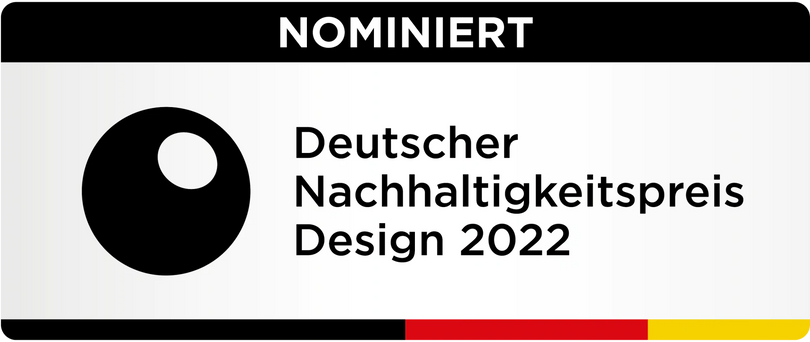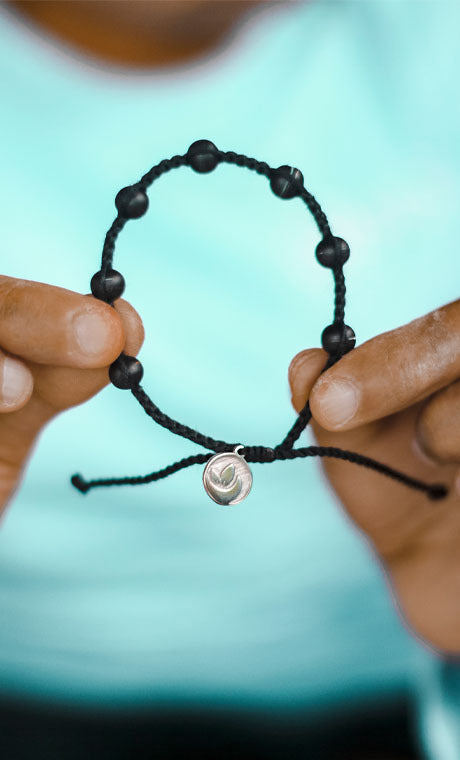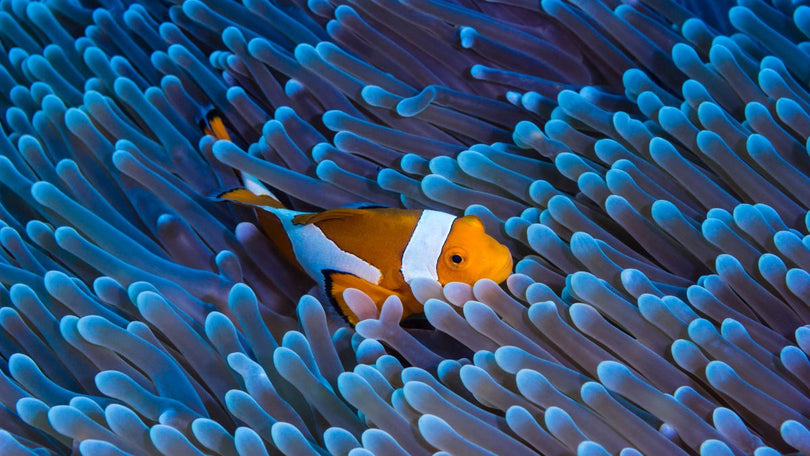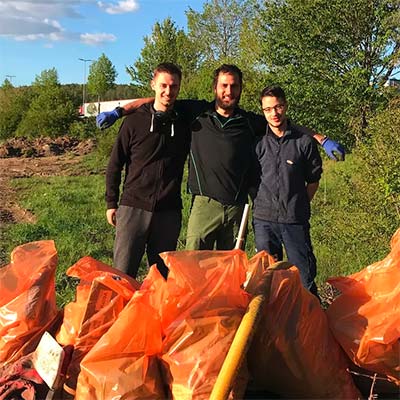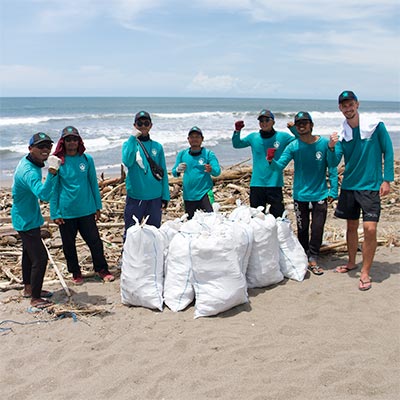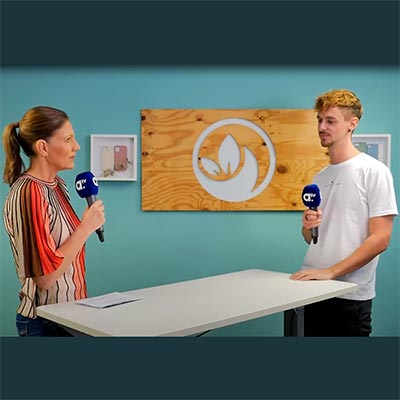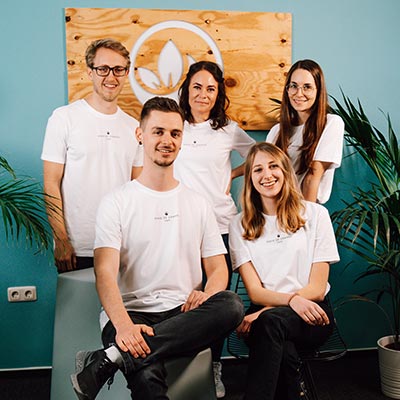Die Hülle wurde im Rahmen einer Studienarbeit von Dominik konzeptioniert. Ihre Entwicklung erfolgte bis zum Prototypenstatus in Deutschland. Die Feinarbeit wurde dann mit unserem Partner in China ermöglicht.
Wir wollen besser werden und das schaffen wir am besten mit deiner Hilfe
Wir von Oceanmata wollen zusammen mit dir unsere Meere vom Plastikmüll befreien und mit unseren Produkten nachhaltige Alternativen schaffen.
Wir sind noch nicht perfekt, aber wir arbeiten täglich daran besser zu werden und dafür sind wir immer dankbar für eure Unterstützung.
Hast du Kritikpunkte oder Verbesserungsvorschläge?
Lass es uns gerne wissen und schreibe uns eine Nachricht.
Oceanmata bei Augsburg TV
Unser Produkt - die biologisch abbaubare Hülle
Wo wurde die Handyhülle entwickelt?
Für die Herstellung der Spritzgussformen und damit für die Serienfertigung haben wir uns für den Produktionsstandort China (Changan Town in Guangdong) entschieden. Auch wenn wir aus dem Nachhaltigkeitsgedanken eine lokalere Produktion wünschenswert finden, müssen wir uns eingestehen, dass in China aktuell die höchste Kompetenz liegt, was die Produktion von Handyhüllen betrifft. Dementsprechend lassen wir in China unsere Handyhülle unter höchsten Qualitätsstandards herstellen. Natürlich legen wir ein besonderes Augenmerk auf Arbeitssicherheit, faire Entlohnung und Arbeitsbedingungen. Aus diesem Grund ist unser Hersteller vom TÜV Rheinland zertifiziert.
Habt ihr Zertifizierungen für die Handyhülle?
Unsere Hüllen sind kompostierbar zertifiziert. Hierbei ist wichtig zu betonen, dass biologisch abbaubares Plastik nicht gleich kompostierbares Plastik ist.
Der Unterschied ist wichtig und deshalb möchten wir ihn euch kurz erklären. Biologisch abbaubar bezieht sich auf ein Material, das mit Hilfe von Mikroorganismen abgebaut wird. Um als biologisch abbaubarer Kunststoff bezeichnet zu werden, gibt es allerdings keinen zeitlich vorgegebenen Rahmen für den Prozess der Zersetzung. Außerdem können die Kunststoffe in vereinzelten Fällen giftige Rückstände hinterlassen, wobei die Betonung ganz klar auf Können liegt.
Hier findest du die Zertifizierung für den Werkstoff:
(https://www.dincertco.tuv.com/registrations/60153483?locale=de)
Um diese Zertifizierung zu erlangen, gilt es bestimmte Bedingungen einzuhalten.
Diese sind:
...
- Biologische Abbaubarkeit im wässrigen Medium (Sauerstoffbedarf und Entwicklung von CO2): Es ist nachzuweisen, dass mindestens 90% des organischen Materials in 6 Monaten in CO2 umgewandelt werden- Desintegration in Kompost: Nach 3 Monaten Kompostierung und anschließender Absiebung durch ein 2 mm Sieb dürfen nicht mehr als 10 % Rückstände bezogen auf die Originalmasse verbleiben
...
Quelle: http://www.bioplastics.ch/EN-13432.pdf
Unser Werkstoff für die Hüllen ist in diesem Rahmen zertifiziert. Ergänzend gilt es allerdings zu sagen, dass diese Regulierung in Hinblick auf unseren Werkstoff in Form einer dünnen Folie zutrifft, allerdings noch nicht in der Form einer Handyhülle, die mit ca. 1,5 mm wesentlicher dicker ist und dadurch deutlich länger für den Kompostierungsprozess benötigt.
Dadurch ist die Handyhülle nach aktuellem Standard "biologisch abbaubar", aber nicht "kompostierbar".
Das hat einen einfachen Grund: Unsere Intention bei der Herstellung der biologisch abbaubaren Handyhülle war nicht, sie dem Kompost zuführen zu können. Die biologische Abbaubarkeit soll dazu führen, dass der Umwelt geringere Schäden zugefügt werden, als bei einer gewöhnlichen Handyhülle der Fall. Gehen wir von dem Fall aus, dass die Handyhülle im Ozean landet, hat sie nun eine Chance sich biologisch zu zersetzen.
Die biologische Handyhülle hat dadurch wesentlich geringere schwerwiegende Auswirkung auf die Umwelt, Tiere und den Ozean.
Zum Vergleich: Eine Handyhülle aus normalen Kunststoffen benötigt teilweise bis zu 500! Jahre, um sich zu zersetzten. Zusammenfassend kann man sagen, dass keine Hülle kopflos entsorgt werden sollte. Leider kann derzeit kein*e Endverbraucher*in beeinflussen, wo der Müll der Gelben Tonne landen wird. Nicht alles kann und wird recycelt werden. Deshalb wird auch unser Müll durch Exporte in Deponien in Indonesien, Indien, usw. landen.
Unser aller Fokus sollte deshalb ein bewusster Konsum sein. Was uns betrifft, so ist unser Fokus schon immer gewesen, ein Produkt herzustellen, das einen Unterschied macht. Auch wenn das aktuell bedeutet, noch keine perfekte Lösung zu haben. Unser Lernprozess ist kontinuierlich und wir werden weiter passioniert daran arbeiten, die umweltfreundlichste Alternative anbieten zu können.
Was genau sind die Inhaltsstoffe der Handyhülle?
Hand aufs Herz – auch hier arbeiten wir noch an unserer „best version of us“. Aktuell basiert unsere Handyhülle noch auf einem kompostierbaren Kunststoff, welcher Mineralöl basierend ist. Es gibt bereits Alternativen aus nachwachsenden Rohstoffen bspw. Maisstärke, allerdings entsprechen diese in Bezug auf Langlebigkeit und Härte noch nicht unseren Anforderungen.
Da uns dieser Fakt aber selbst ein Dorn im Auge ist, möchten wir dieses Jahr eine Handyhülle entwerfen, die komplett aus nachwachsenden Rohstoffen besteht UND kompostierbar ist.
Ein kurzer Exkurs, denn auch wir machen Fehler und wir möchten dafür einstehen:
***
Bei der Darstellung auf der Homepage ist uns leider ein Fehler passiert. Wir hatten bei den Inhaltststoffen PBAT als "77% Zucker (PBAT)" aufgeführt. Durch diesen Begriff lässt sich unter Umständen darauf schließen, dass für die Produktion kein Mineralöl verwendet wird. Aktuell kommen wir allerdings noch nicht zu 100% ohne Erdöl aus.
Wenn du daher deine Handyhülle zurücksenden möchtest, schreibe uns kurz im Kund*innensupport und wir bieten dir eine Rücksendung & Erstattung an. (Diese Falschangabe wurde am 01/2021 korrigiert)
***
Für alle Expert*innen unter euch, deren Herz bei einer genaueren Aufschlüsselung höher schlägt – hier findet ihr alles dazu:
77 % PBAT
"Polybutylenadipat-terephthalat (PBAT) ist ein biologisch abbaubares und kompostierbares Copolymer aus der Gruppe der Polyester."
(Quelle: https://de.wikipedia.org/wiki/Polybutylenadipat-terephthalat#:~:text=Polybutylenadipat%2Dterephthalat%20(PBAT)%20ist,aus%20der%20Gruppe%20der%20Polyester. )
4 % Cellulose
"Die Cellulose (auch Zellulose) ist der Hauptbestandteil pflanzlicher Zellwände (Massenanteil etwa 50 %) und damit die häufigste organische Verbindung und auch das häufigste Polysaccharid (Vielfachzucker). Cellulose ist auch das am häufigsten vorkommende Biomolekül.[5] Sie ist unverzweigt und besteht aus mehreren hunderten bis zehntausenden (β-1,4-glycosidisch verknüpften) β-D-Glucose- bzw. Cellobiose-Einheiten. Diese hochmolekularen Celluloseketten lagern sich zu höheren Strukturen zusammen, die als reißfeste Fasern in Pflanzen häufig statische Funktionen haben. Vom in der Natur ebenfalls häufigen Polysaccharid Chitin unterscheidet Cellulose sich durch das Fehlen der Acetamidgruppen. Cellulose ist bedeutend als Rohstoff zur Papierherstellung, aber auch in der chemischen Industrie und anderen Bereichen."
Quelle: https://de.wikipedia.org/wiki/Cellulose
11 % Calcium Carbonate
"Calciumcarbonat ist eine der am weitesten verbreiteten Verbindungen auf der Erde, vor allem in Form von Sedimentgesteinen. Es tritt vor allem in der Form des Minerals Calcit (Kalkspat, Doppelspat) auf, das zu den häufigsten Mineralen der Erdkruste gehört. Es ist nicht nur in den massiven Kalkgesteinen das vorherrschende Kristall, in Verbindung mit Quarz, Baryt und Fluorit bildet es auch das Muttergestein sehr vieler Erzgänge. Es kann sogar der einzige Bestandteil von Gängen sein, deren Mächtigkeit von einigen Zentimetern bis zu einigen zehn Metern reicht."
Quelle: https://de.wikipedia.org/wiki/Calciumcarbonat
6 % TBAC (Tributyl acetylicitrate)
"Acetyltributylcitrat wird als biologisch unbedenklicher Weichmacher für PVC und andere Polymere als Ersatz für einige Anfang 2015 verbotenen Phthalate verwendet.[4] Es kann insbesondere als Ersatz für DEHP und DINP eingesetzt werden.[6] Laut Studien geht es nur sehr wenig von PVC-Folien in Nahrungsmittel über.[7][8] Es geht jedoch von PVC-Plastikgeschirr in geringem Maße in Flüssigkeiten wie zum Beispiel Milch über.[9] Die Verbindung wird auch als Weichmacher für das Copolymer PVDC/PVC verwendet.[10] Im Kosmetikbereich wird es zur Herstellung von Nagellacken verwendet. Dabei reduziert Acetyltributylcitrat die Härte und damit die Sprödigkeit des Films und gibt dem Film mehr Elastizität. Weiterhin erleichtert Acetyltributylcitrat das Verdampfen der Lösungsmittel, z. B. Ethylacetat, im Nagellack
Quelle: https://de.wikipedia.org/wiki/Acetyltributylcitrat
2 % Talk Puder und Titanium dioxide
"Talk gehört zu den gesteinsbildenden Mineralen in der Epizone der kristallinen Schieferreihe[7] und ist Hauptbestandteil des Specksteins (auch Steatit)."
Quelle: https://de.wikipedia.org/wiki/Talk_(Mineral)
Titandioxid hat als Weißpigment ein weites Einsatzgebiet, daher werden weltweit pro Jahr vier bis fünf Millionen Tonnen produziert.[8] Die Haupteinsatzgebiete liegen im Bereich der Beschichtungen wie Lacke und Anstriche, gefolgt von Kunststoffeinfärbungen und Laminatpapieren. Farbige Produkte enthalten in der Regel auch Weißpigmente, um ein hohes Deckvermögen zu erreichen.
Quelle: https://de.wikipedia.org/wiki/Titan(IV)-oxid
>1% "Hindered Phenol Antioxidants"
(Quelle: https://de.wikipedia.org/wiki/Antioxidans)
Wie schnell zersetzt sich die Hülle im Ozean/Boden/usw.?
Wir gehen aktuell von 2 - 5 Jahren aus, allerdings ist dies auch immer an die Bedingungen in der Umwelt gebunden die sich ständig ändern können.
Ein aktueller Test hat nach ca. 6 Monaten Kompostierung im Heimkompost, folgendes Bild ergeben:
Juni 2020 - Dezember 2020 (Test durchgeführt von tierisch_kompostieren)
Wenn du mehr Wissen möchtest findest du hier eine Quelle des Umweltbundesamtes:
(https://www.umweltbundesamt.de/sites/default/files/medien/421/publikationen/18-07-25_abschlussbericht_bak_final_pb2.pdf)
Kann die Handyhülle recycelt werden?
Ja, die Handyhülle kann recycelt werden.
Aber hier ist Vorsicht geboten: Im handelsüblichen gelben Sack wird die Hülle allerdings normalerweise aussortiert und dem Restmüll zugeführt. Das liegt daran, dass die Recyclingfirmen aktuell noch keinen biologisch abbaubaren Kunststoff recyceln.
Wir arbeiten gerade an einer Kreislaufschließung. Das bedeutet, wir möchten die Hülle für dich recyceln und daraus neue Produkte fertigen. Noch sind wir nicht so weit, aber zukünftig kannst Du uns gerne deine Handyhülle zurücksenden und wir übernehmen das Recycling für Dich.
Wo werden die Handyhüllen bedruckt und wie?
Aktuell bieten wir vereinzelt Handycases mit bedruckten Motiven an. Diese werden regional von der Firma betterdigital in Augsburg bedruckt. Wir wissen dabei, dass die im UV Druck verwendeten Farben noch nicht unseren eigenen Ansprüchen an Nachhaltigkeit entsprechen und suchen hier aktuell nach Lösungen nachhaltige Farben zu verwenden.
Aktuell verwenden werden von der Firma betterdigital Farben der Firma Sun Chemical aus der Serie "Crystal" verwendet. Mehr Infos findet ihr hier:
https://www.sunchemical.com/crystal/
Partnerfirma: https://betterdigital.de/
Unser Produkt - das Armband aus Ozean Plastik
Wo wurde das Armband entwickelt?
Das Armband entstand in Kooperation mit der Firma Susila in Denpasar auf der Insel Bali. Dominik hat während seiner Reise zusammen mit dem Team von Susila nach Möglichkeiten gesucht das gesammelte Ozean Plastik in Armbänder zu verarbeiten. Susila ist dabei spezialisiert auf die Herstellung von Armbändern. Nach ca. 4 Monaten Entwicklungszeit ging das erste Oceanmata Armband dann im Februar 2022 an den Start.
Das Armband wird auf Bali in der Hauptstadt Denpasar hergestellt.
Woher stammt das Ozean Plastik für das Armband?
Das Ozean Plastik sammeln wir selbst mit unserem Standort in Medewi auf der Insel Bali. Von dort wird ein Teil des gesammelten Ozean Plastiks an einen unserer Lieferanten geliefert der daraus Platten presst. Aus diesen Platten werden dann in einem zweiten Schritt runde Kugeln gebohrt und gefertigt. Diese runden Kugeln verarbeitet Susila dann kunstvoll in eine Armband.
Wir können nicht garantieren, dass das Ozean Plastik zu 100% von uns stammt. Da unser Lieferant auch anderweitig Plastik recycelt und dadurch es immer sein kann, dass sich in den Platten ein Teil von Ozean Plastik oder recyceltem Plastik befindet das nicht direkt von uns ist.
Unser Ocean Clean Up Projekt in Bali
Wo ist euer Clean up Projekt?
Unser aktueller Standort befindet sich direkt am Strand von Medewi:
https://www.google.com/maps/place/8%C2%B024'56.5%22S+114%C2%B048'17.7%22E/@-8.415692,114.8027263,17z/data=!3m1!4b1!4m6!3m5!1s0!7e2!8m2!3d-8.415692!4d114.804915

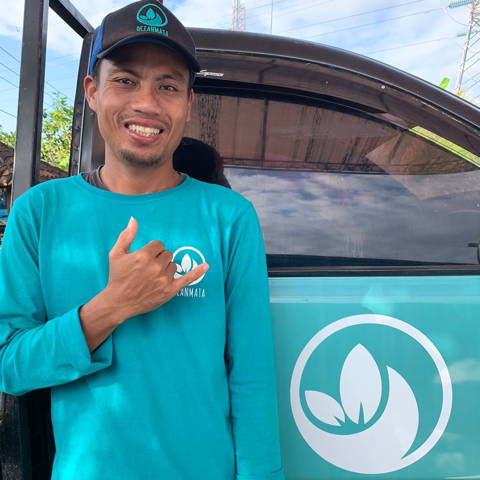
In den Monsunzeiten haben wir aber besonders gemerkt, dass der Standort extrem von Überschwemmungen betroffen ist und deswegen bauen wir aktuell einen neuen und größeren Recyclingstandort auf, um zukünftig das Ozean Plastik besser verwerten zu können und zu waschen.
Der neue Standort entsteht hier:
https://www.google.com/maps/place/8%C2%B024'04.0%22S+114%C2%B048'04.2%22E/@-8.4010811,114.800979,20z/data=!4m5!3m4!1s0x0:0x0!8m2!3d-8.401108!4d114.801162
Du hast Lust dir das mal vor Ort anzusehen oder vielleicht sogar mitzuhelfen? Da freuen wir uns! Melde dich gerne bei uns: team@oceanmata.com
Update 06/2021: Mittlerweile ist unser neuer Standort fertiggestellt und du kannst uns jeder Zeit dort besuchen. Gebe einfach bei google maps "Oceanmata Medewi" ein.
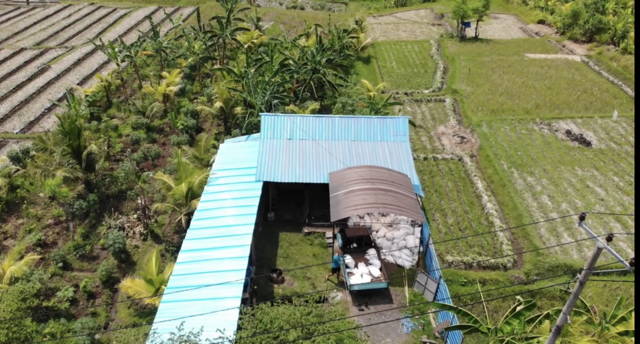
Wo oder wie wird der Müll recycelt?
Mit unserem Ocean Clean Up Projekt haben wir im Januar 2020 den ersten Schritt getan, um Ozean Plastik zu sammeln. Den Recyclingprozess haben wir anfangs externen Firmen überlassen und an diese unser gesammeltes Plastik weitergegeben.
Mit unserem neuen Recyclingstandort haben wir in eine Shreddermaschine investiert und bauen eine eigene Waschstraße auf, um Ozean Plastik sortenrein zu trennen, zu reinigen und schließlich zu shreddern. So aufbereitet, können umliegende Kunststoffverarbeitungsfirmen neue Kunststoffe aus dem Ozean Plastik herstellen.
Um diesen wichtigen Schritt aber zukünftig besser im Blick zu haben ist es unser Ziel den kompletten Prozess selbst in die Hand zu nehmen. So können wir beispielsweise ein eigenes Granulat aus dem Ozean Plastik herstellen, welches dann für neue Produkte verwendet werden kann.
Was passiert mit dem Rest der nicht recycelt werden kann?
Leider können ca. 40% des gesammelten Ozean Plastiks, nicht wieder recycelt werden.
Die nicht recycelbaren Kunststoffe sind in diesem Fall durch Sonneneinstrahlung zu sehr zersetzt und brüchig, oder können von Grund auf nicht recycelt werden.
Aktuell arbeiten wir zusammen mit einem anderen deutschen Startup daran mit Hilfe einer neuen Technologie diesen Müll aufzuarbeiten und "wieder" verwendbar zu gestalten. Da dies noch sehr in den Kinderschuhen steckt, können wir noch nicht zu viel verraten:)
Unsere Partnerorganisationen
Mit welchen Organisationen arbeitet ihr zusammen und wie viel wurde gespendet?
Kurma Asih Turtle Project:
ca. 1.500 EUR
Turtle Foundation von 2022 - August 2023:
ca. 30.000 EUR
Dolphin Project:
ca. 2000 EUR
Ecosystem Impact:
ca. 10.000 EUR
Marina Megafauna Foundation:
860 USD
Aufbau des eigenen Clean Up Projekts:
ca. 28.800 EUR
Wie seid ihr zur Organisation "Dolphin Project" gekommen?
Durch Recherchen sind wir zufällig auf das Dolphin Project gestoßen, dass unteranderem auch in Bali einen Standort hat. Die sehr bewegende Geschichte der Rettung der drei Delphine Johnny, Rocky und Rambo hat uns sofort überzeugt. Nach Absprachen haben wir uns dann endgültig für die Unterstützung dieser großartigen Aktion entschieden.
Wie viel wird gespendet?
Je verkauftem Produkt spenden wir 5% an die Organisation und je Patenschaft 20%. Ausgehend jeweils vom Nettoumsatz.
Update 17.02.2023:
Aktuell haben wir mit den Partnern vereinbart, dass wir vorerst für die nächsten Monate - 10% von unserem Gewinn aber mindestens immer 1% unseres Umsatzes pro Produkt spenden.
Hintergrund ist das die Entwicklung von Oceanmata aktuell schwierig ist und wir gerade sehr viel Fokus auf das Clean Up Projekt lenken.
Unser Versand und die Verpackung
Aus was besteht unsere Versandverpackung?
Unsere Verpackungen bestehen aus 30% Gras und 70% Altpapier. Kurz genannt: Graspapier!
Warum Graspapier?
Kurze Wege:
Für den Rohstoff Gras werden hauptsächlich Wiesen in der näheren Umgebung des Papierwerkes von Thimm verwendet.
Insektenschutz: Die Graspapier Wiesen werden nur in naturschonenden und geregelten Abständen abgemäht. Das heißt ein wichtiges Biotop bleibt bestehen, das dem Erhalt der Artenvielfalt dient.
Keine Klammern, Kleber und Co.: Die Grasbox ist so designed, dass weder Paketband noch Metallklammern benötigt werden, um sie sicher zu verschließen.
Wasser: Für die Herstellung von Zellstofffaser wird normalerweise enorm viel Wasser benötigt und außerdem kommen umweltbelastende Chemikalien zum Einsatz. Studien haben ergeben, dass die Herstellung von Graspapier deutlich weniger Wasser und Energie verbraucht.
Wie versenden wir unsere Produkte?
Aktuell versenden wir deine Produkte per DHL GoGreen. Das heißt dein Päckchen kommt CO2 neutral von unserem Lager in Bielefeld bei dir Zuhause an.
Wie viel CO2 verursacht der gesamte Weg einer Handyhülle?
Wir haben uns vorgenommen, dir eine genaue Aufstellung unserer CO2 Emission bereitzustellen und unsere CO2 Emission zukünftig zu kompensieren.
Wir halten dich hierbei auf dem Laufenden.
Wie kommen die Handyhüllen von der Produktion ins Lager
Wir importieren unsere Hüllen als Sammelbestellungen aus China und lagern diese bei einem externen Dienstleister ein.
Noch haben wir keinen CO2 Ausgleich, aber wir sammeln für jede gekaufte Hülle 1kg Plastik aus dem Ozean. Hierfür haben wir unser eigenes Ocean CleanUp Projekt auf Bali aufgezogen. Aktuell haben wir noch sehr kleine Strukturen und noch nicht so eine hohe Planungssicherheit, weshalb die Lieferung unserer Ware per Flugzeug attraktiv für uns ist ist. Das hat den Grund, dass wir hier schneller Ware bekommen können und weniger Monate im Voraus planen müssen. Da wir allerdings stets bestrebt sind noch umweltfreundlichere Hüllen anbieten zu können, sind wir aktuell dabei unsere Bestellprozesse zu ändern.
Zukünftig ist unser Ziel unsere Handyhüllen über Containerzüge zu transportieren und damit den CO2 Ausstoß deutlich zu verringern. Zusätzlich wollen wir baldmöglichst CO2 neutral werden und unseren CO2 Ausstoß komplett kompensieren.


